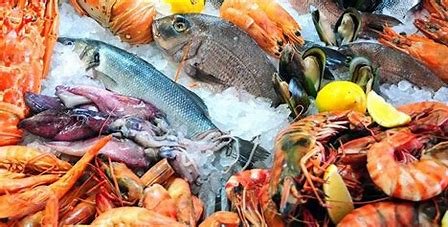Choosing sustainable seafood is crucial for preserving marine ecosystems and ensuring the long-term viability of fish populations.

1. Know the Labels:
- MSC (Marine Stewardship Council): Look for the blue MSC label, which certifies that the seafood comes from a sustainable and well-managed fishery.
- ASC (Aquaculture Stewardship Council): The ASC label indicates that the seafood is farmed responsibly with minimal environmental impact.
- BAP (Best Aquaculture Practices): This certification ensures that the aquaculture process meets high standards for environmental and social responsibility.
2. Use Seafood Guides:
- Seafood Watch: The Monterey Bay Aquarium’s Seafood Watch program provides a comprehensive guide to sustainable seafood choices, offering recommendations based on the latest scientific research.
- Seafood Watch
3. Choose Lower-Trophic Species:
- Small, Fast-Growing Fish: Opt for species like anchovies, sardines, and mackerel, which reproduce quickly and are less vulnerable to overfishing.
- Shellfish: Clams, mussels, oysters, and scallops are often sustainable choices because they are filter feeders that can improve water quality.
4. Avoid Overfished and Vulnerable Species:
- Red List: Avoid species listed as “red” or “avoid” by sustainable seafood guides, such as certain tuna, shark, and swordfish populations that are overfished or caught using destructive methods.
5. Support Local Fisheries:
- Local and Seasonal: Purchase seafood from local fisheries that follow sustainable practices and catch fish in season. This reduces the carbon footprint associated with transportation and supports the local economy.
6. Ask Questions:
- Traceability: Ask your fishmonger or restaurant about the origin and method of catch or farming. Sustainable sources should be transparent about their practices.
- Certification: Inquire if the seafood is certified by recognized sustainability programs.
7. Diversify Your Choices:
- Variety: Eating a variety of seafood reduces pressure on popular species and helps maintain ecosystem balance.
- Less Common Species: Try lesser-known, sustainably sourced species to support a more diverse marine ecosystem.
8. Educate Yourself and Others:
- Stay Informed: Keep up-to-date with the latest information on sustainable seafood and share your knowledge with friends and family.
- Advocate: Support policies and initiatives that promote sustainable fishing practices and marine conservation.
Conclusion:
Making sustainable seafood choices is essential for protecting our oceans and ensuring the availability of seafood for future generations. By following these guidelines and staying informed, you can contribute to healthier marine ecosystems and more responsible seafood consumption.
